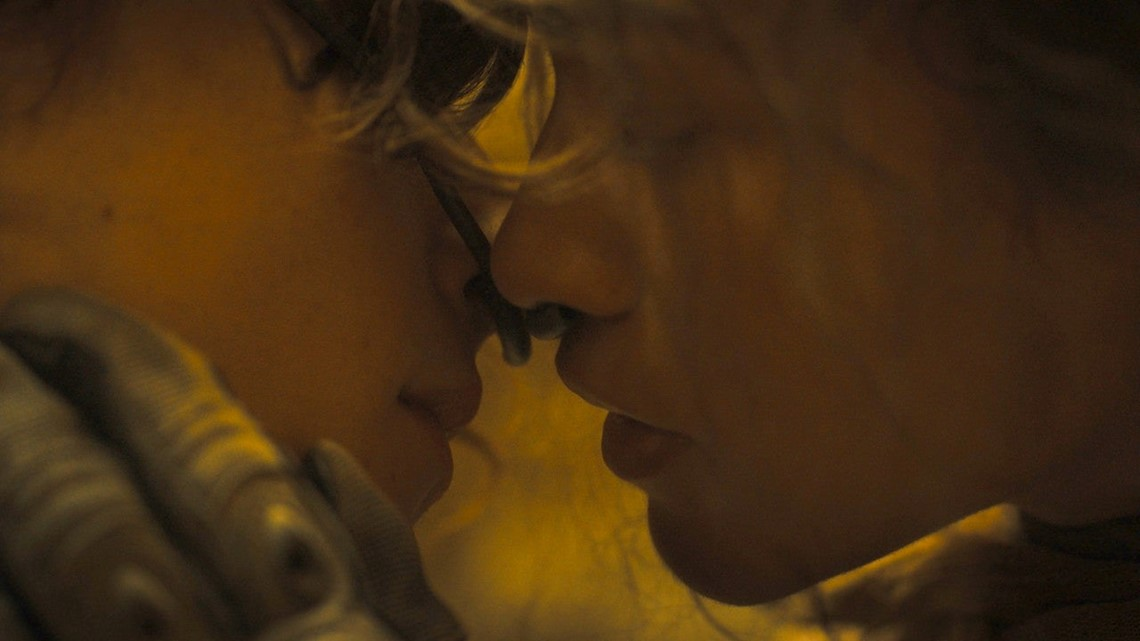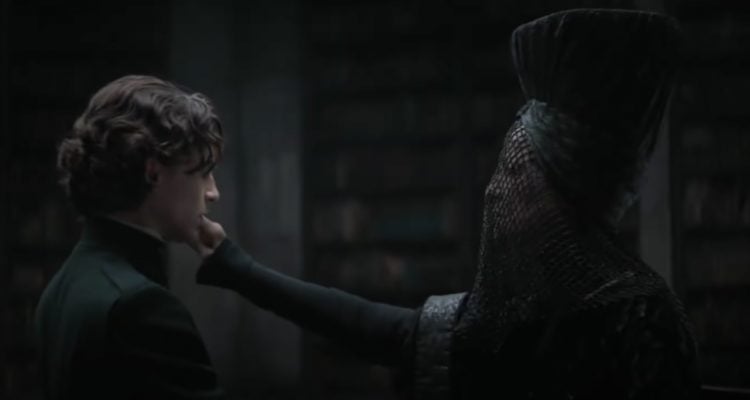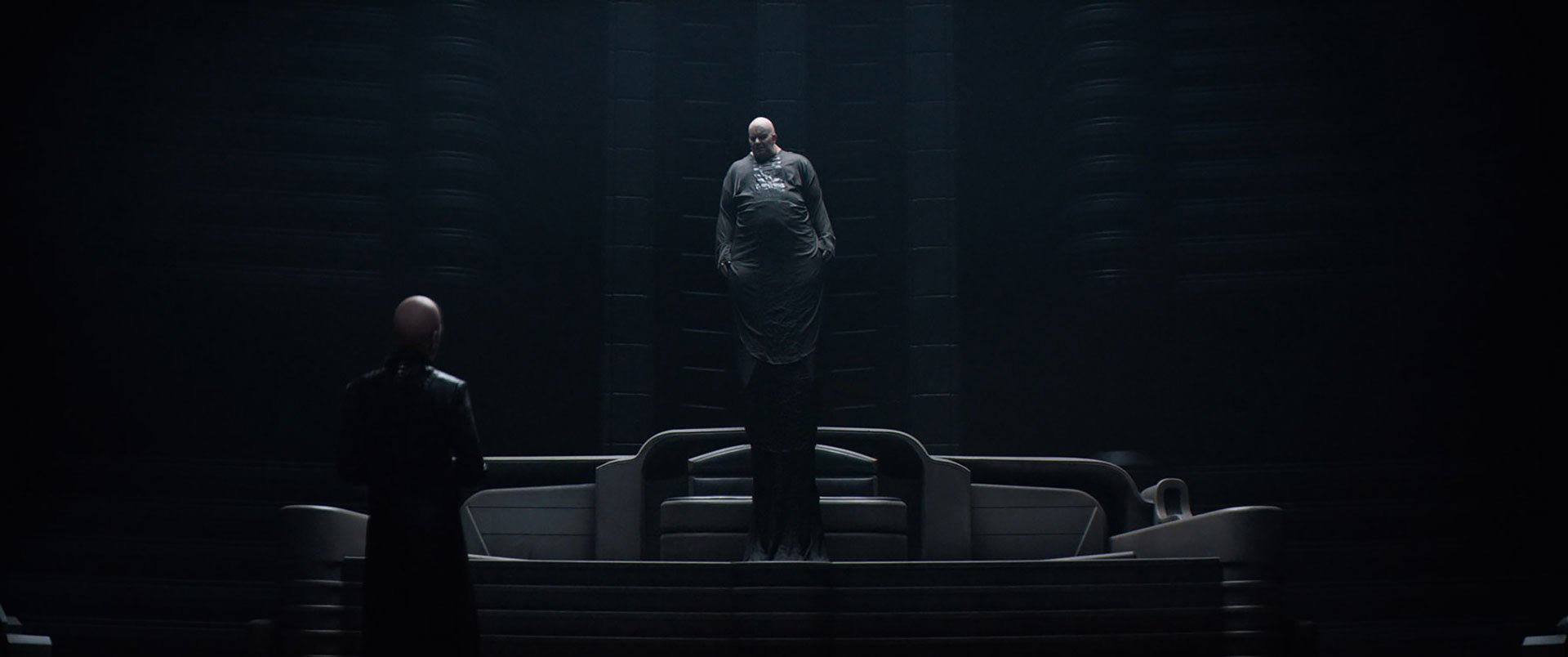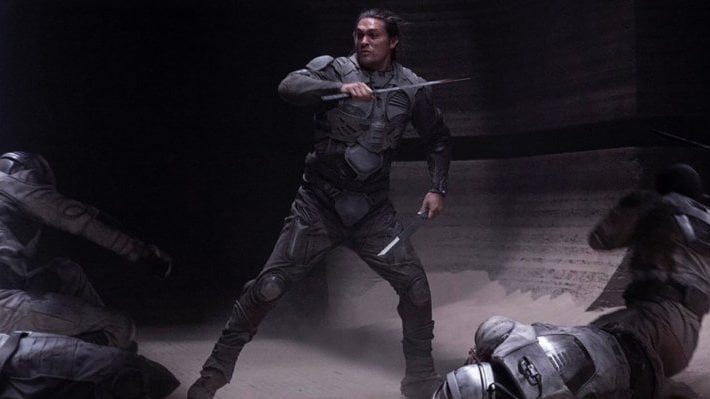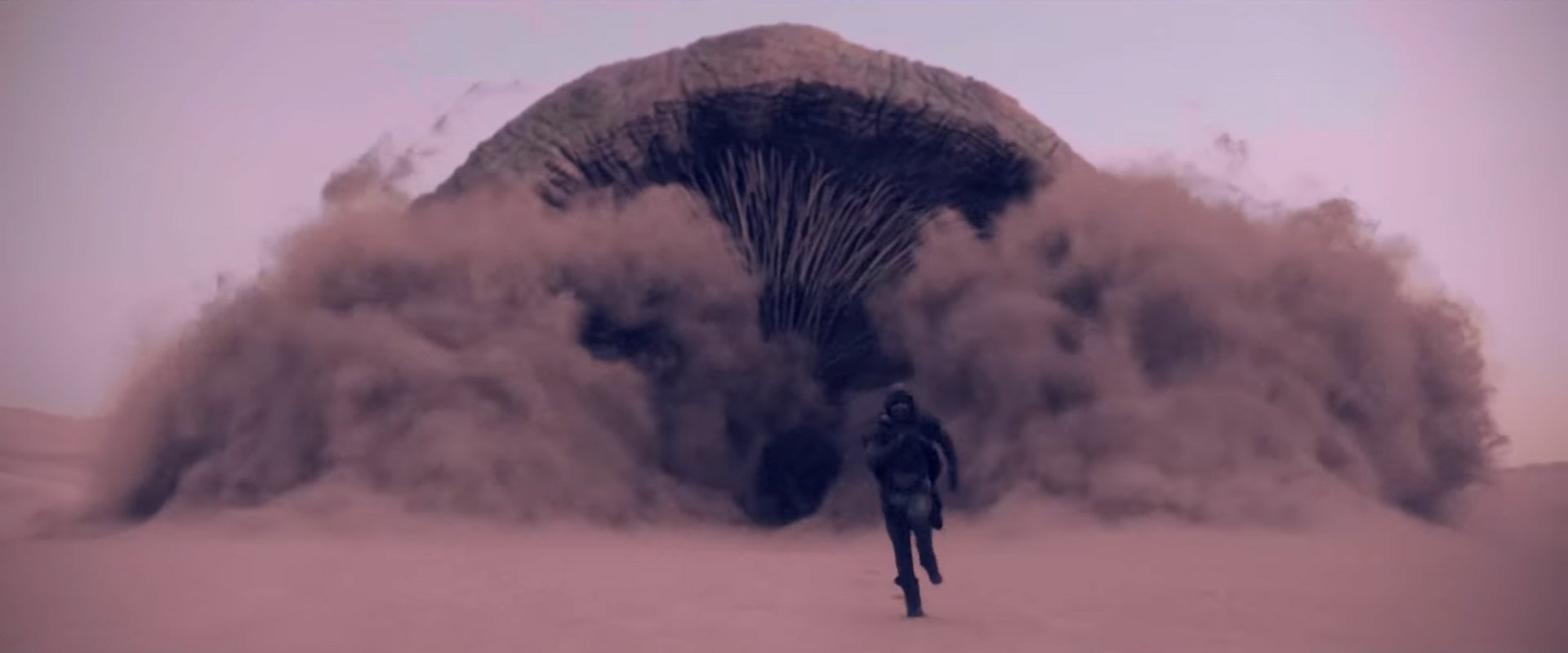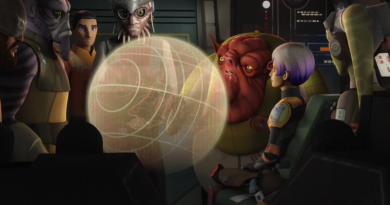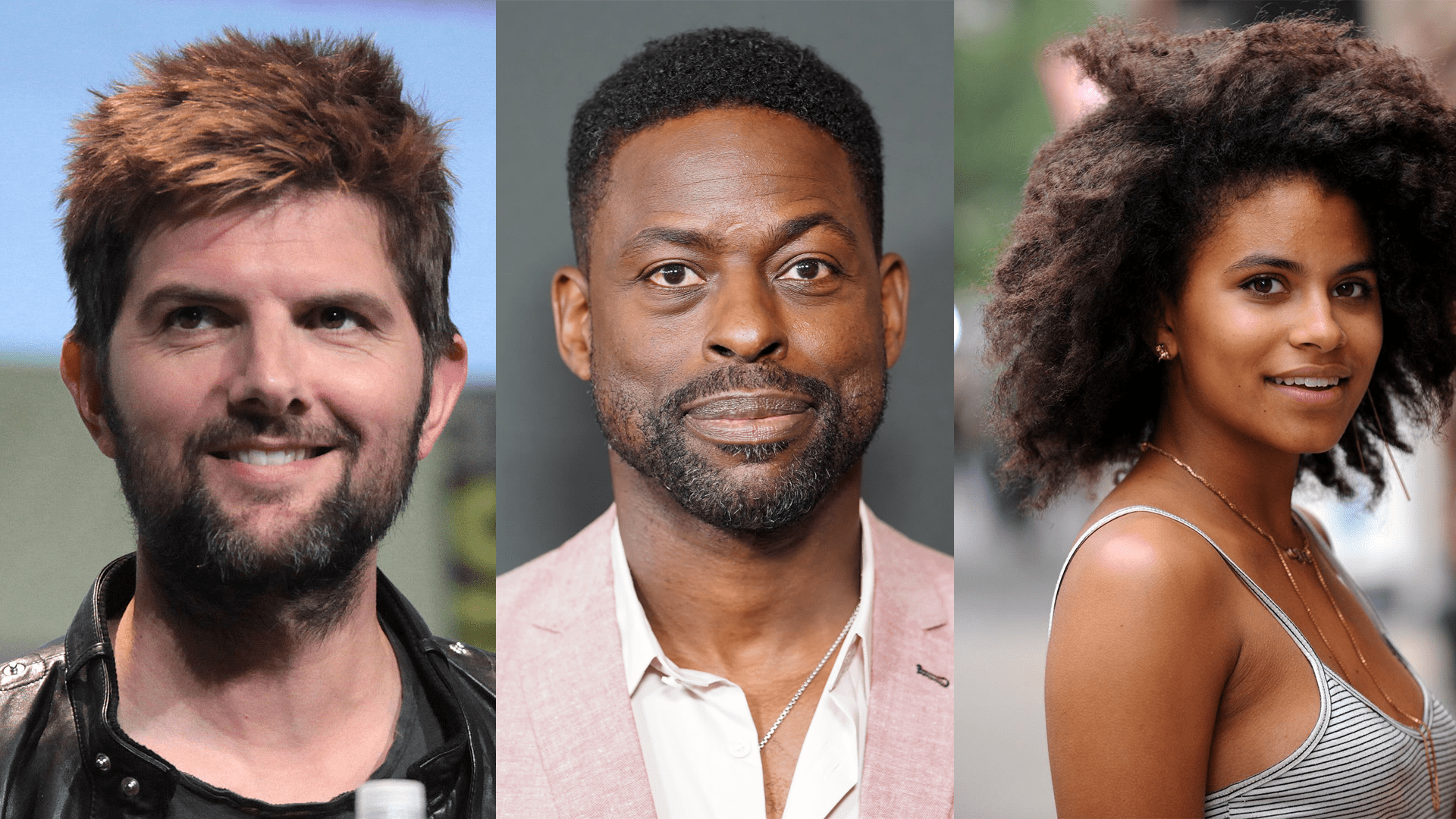Editorial: What the ‘Star Wars’ Franchise Owes to ‘Dune’
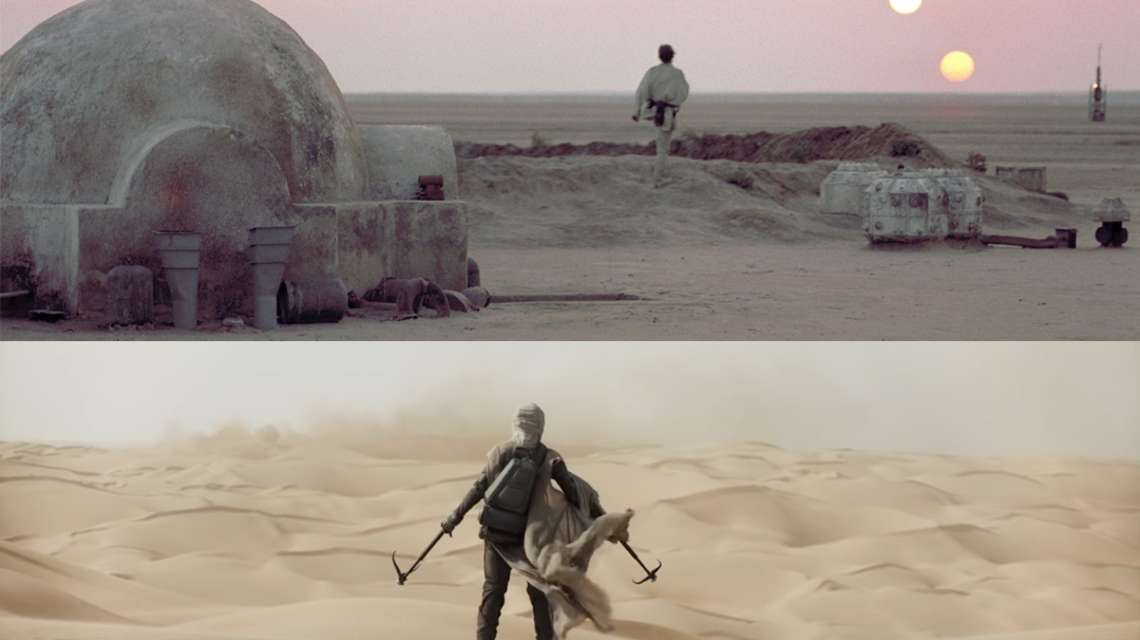
With the release of Denis Villeneuve’s adaptation of Dune (Dune: Part Two hits theaters today in the United States, at least), it’s worth looking into how many of the ideas of Frank Herbert’s acclaimed, groundbreaking science fiction novel paved the way for Star Wars across over forty years of cinematic storytelling. Since Dune is a clear inspiration for Star Wars, now’s as good a time as any to look at the ways that the galaxy far, far away drew inspiration from a sci-fi story. Unmarked spoilers for the Dune novels and Star Wars movies ahead.
At the time of development of the film that would retroactively be titled A New Hope, and later when The Empire Strikes Back began shooting, Herbert published Children of Dune, the third book in the series that followed the events of the original Dune and Dune Messiah. Later, before the production of Return of the Jedi began, Herbert also released a fourth book called God-Emperor of Dune. (Herbert made two more books in the series, Heretics of Dune and Chapterhouse: Dune, before passing away in 1986; the series continued after his death with sequels, prequels, and other spin-offs co-authored by his son.) Even beyond the realm of inspiration, Dune is tied to Star Wars as far as Hollywood goes – surrealist director David Lynch was George Lucas’s top pick to work on Return of the Jedi, but he opted to do Dune instead, and now Denis Villeneuve has cited the Star Wars franchise as a visual inspiration for his new film. While one franchise is widely known in popular culture through its blockbuster movies, the other has a comparatively smaller, but still dedicated fanbase that is now getting a greater degree of exposure from the newest adaptation of the original story. To begin this list of comparisons, let’s start with the small stuff that Dune may have been an influence for, things that don’t matter as much to the narrative of Star Wars.
Superficial Similarities
The most obvious place to start is with the concept of the desert planet – while Dune didn’t invent the concept, it did popularize it in the form of Arrakis, the formal name for the titular planet where the majority of the stories take place. Arrakis and Tatooine both share key similarities in that moisture is extracted from the atmosphere (either by dew collectors or moisture farmers) so that life can continue on the planet, and mining is important to the economy of Arrakis while it once was for Tatooine. Tatooine stopped being a mining-based economy long ago, but it still has sandcrawlers from that era, while the spice harvesters on Arrakis are very active in their mining operations by the time of the story. The thing that really sets the two planets apart is that, while Arrakis is functionally the center of the entire “Duniverse”, Tatooine is the planet that it’s farthest from, in the Outer Rim and away from most of the action. In many respects, it’s a wonder that people even stay on Tatooine considering the lack of notable resources on the planet, unlike the Spice Melange of Arrakis, which is necessary for galactic travel. Another key difference is that while Luke Skywalker has spent most of his life on Tatooine until taking part in an adventure, Dune protagonist Paul Atreides was born and raised on Caladan and moved to Arrakis with his family as part of an agreement with the Imperium. An element that’s established later is that certain characters can appear to age rapidly due to the exposure to the harsh conditions of the desert, as Paul and Obi-Wan both do between installments.
There are a host of other similarities that match up, but aren’t necessarily huge parts of the Star Wars setting as they are to the Duniverse. Alia Atreides trains against a target dummy with her blades, while Luke trains against a remote with a lightsaber. Electric-powered binoculars are utilized by Paul as he scouts out Fremen (the native population of Arrakis), and Luke memorably uses them to search for his droids and later spot Tusken Raiders. Various iterations of the Imperium rule the Duniverse over time, but the Empire is one of several governments throughout galactic history. The Spacing Guild has a monopoly on shipping and transportation, while the Trade Federation attempts to assert its growth by controlling shipping – which, aside from its importance to the plot of The Phantom Menace, doesn’t really prove to be that important to the larger story otherwise. The Duniverse has supsensors, while Star Wars has repulsors, which allow both of their users to float above the ground, and both use faster-than-light travel. Spice mines like the ones in the Duniverse are a feature of the galaxy, specifically when it comes to Kessel, but as far as the movies are concerned, it’s only really relevant to the spin-off Solo and not any of the main films. Likewise, there are creatures similar to the Sandworms of the Duniverse, such as the Exogorth (AKA the “space slug”) in The Empire Strikes Back, the Sarlaac in Return of the Jedi, or the Krayt Dragon in The Mandalorian, but none of these creatures are crucial to the ecosystem of Arrakis and the long-form storytelling of the saga, instead of merely serving as standard monsters for our heroes to fight or evade.
Many of these influences can be dismissed to a degree as common tropes to science fiction and space fantasy alike, but not all comparisons between Dune and Star Wars are surface-level. There are actually plenty of similarities within the greater narratives of both stories.
Key Concepts
The Bene Gesserit are the closest thing that the Duniverse have to the Jedi Order, although their secretive and manipulative nature also sort of hearkens to the Sith to a degree. While the Force can allow one to use their powers to influence the actions of others via the power of the Jedi mind trick, the Voice does the same. Followers trained by the Sisterhood orders are able to harness superhuman abilities of their own upon learning their ways, with the Prana-Bindu (which uses the same root word that the Bendu character from Rebels does as a base) being their training regimen. Meanwhile, how Force knowledge is gained varies from student to student, as some knowledge can be instinctive, but is often overseen by a Jedi Master. Representatives of both the Bene Gesserit and the Jedi are often used as government influencers, although the Jedi are often peacekeepers and facilitators, while the Bene Gesserit seek to manipulate the powerful using their own designs.
One of the key ideas shared between Dune and Star Wars is the importance of prophecy and precognition. Thanks to the abilities taught to him by the Bene Gesserit, Paul is able to see things before they happen, with several possible futures presented to him. But despite Paul’s best efforts to avoid tragedy, he finds that his attempts to avert certain outcomes lead to those outcomes arriving all the same, at great cost to both himself and others, even if some outcomes he can control end up being better than others. The Skywalker family all receive various visions over time, which lead to suffering for themselves and others, including their loved ones. Anakin finds out his mother Shmi was captured by Tusken Raiders through the Force, and by the time he rescues her, she dies moments after reuniting with him, leading to his decidedly un-Jedi-like slaughter of an entire village. Anakin sees visions of his wife dying in childbirth, and his attempt to prevent this lead to the series of events that cause her death, along with the fall of the Republic, the destruction of the Jedi, and the rise of the Empire. Luke sees his friends in pain from Dagobah, and by leaving his training to rescue them on Bespin, accomplishes absolutely nothing beyond being literally disarmed and traumatized upon learning a dark truth. Leia learns that her son Ben’s life will be in danger if she trains Jedi, which still happens decades later after he’s been corrupted and subsequently redeemed. Luke causes his nephew’s fall to the Dark Side when, upon seeing the untold suffering the he will cause, he reflexively ignites his lightsaber before moving away from attacking his nephew, only for it to be too late when his nephew awakens to defend himself from what he thinks is his power-crazed uncle. The concept of trying to interfere with fate leading to fate proceeding as planned is a very old concept in fiction, and as such, it’s unsurprising that it’s a shared element between these two franchises.
While Star Wars is well-known for the famous “I am your father” reveal, with it being revealed that Luke Skywalker is the son of Darth Vader, Dune actually utilized the concept when it a vision of the past experienced by Paul Atreides that the villainous Baron Harkonnen is the illegitimate father of Lady Jessica, his mother. Paul’s descendants secretly carry both bloodlines forward, which itself is somewhat reflected in Star Wars as two rival bloodlines spiritually merging into a single one. Rey is biologically the granddaughter of Emperor Palpatine – who she repudiates – but is resurrected by her half of a Dyad with the last Skywalker, who dies to save her. She becomes the last Skywalker after his death, accepting that the Skywalker family, connected to her through the Force, is her adoptive family. While Luke and Rey are both told of their villainous ancestors, Paul learns of the truth through his emerging abilities.
Character Archetypes
Paul Atreides has character aspects that are reflected in both Anakin Skywalker and his son Luke. While Paul has more in common with Luke, he’s entrusted with a prophecy of sorts like Anakin. Whereas Anakin is the Chosen One who will bring balance to the Force, Paul is the prophesized Kwisatz Haderach, who the people of Arrakis believe will provide the “shortening of the way” that will bring his followers to prosperity on the “golden path”. The twist, however, is that Paul ultimately ends up failing through his success, in a sense – going down this path results in the power Paul seeks, but leaves countless people dead and worlds left in ruin, which eventually results in Paul going into exile and becoming a preacher to tell others to move away from the path he’d once set for them. Anakin, and later Luke, end up failing at their respective goals, but make moves toward correcting their mistakes with the generation that succeeds them – Anakin causes the downfall of the Jedi, but he destroys the Sith and helps ensure the Empire’s destruction, while Luke ends up creating a new Darth Vader, but he guides the next Jedi who helps redeem him and ensures the final defeat of the remnants of the Empire and the Sith. Paul’s son, Leto II, would end up succeeding in areas where his father had failed, much like Luke and later Rey succeed where their predecessors did not. Furthermore, Paul’s wife Chani dies in childbirth after his twin children Leto II and Ghanima are born, much like Padmé passes away after Luke and Leia are born – an event that both Anakin and Paul saw incomplete visions of.
Paul also has a sister named Alia, who like him, has a connection to the powers granted by the Bene Gesserit, much in the same way that Leia Organa is Luke’s twin and can use the Force, and the two are crucial in overthrowing those who plotted against their family as the twins are in keeping the balance of the Force maintained. Alia falls in love with Duncan Idaho, much like Leia falls in love with Han Solo. Duncan himself provides the blueprint that Han would end up following – a swashbuckling scoundrel who is an exceptional pilot that wins over the heart of a princess. (The difference is that Han doesn’t have a bunch of clones that would carry through thousands of years, but that’s neither here nor there.) Two villains in Return of the Jedi have clear counterparts in Star Wars: Baron Vladimir Harkonnen and Emperor Shaddam IV, who inspired Jabba Desilijic Tiure and Emperor Sheev Palpatine. Jabba, much like Vladimir, is a perverted, obese, and greedy, seeking to resolve an immediate rivalry on his terms, while Palpatine takes Vladimir’s scheming qualities. Jabba’s slug design also brings to mind the form that Paul’s son, Leto II, would eventually take in the fourth book: a giant human-worm hybrid creature who sits atop a dais, as Jabba himself does. Palpatine also draws influence from Shaddam IV in that he orchestrates the conspiracy that massacres his enemies, save a select few survivors that he believes he can snuff out later, while ascending to greater power. Palpatine also shares a key trait with both antagonists in that he fully intends to backstab his allies once he has what he wants. There are other comparisons to be made, but many are based general archetypes rather than explicitly being inspired by Dune.
Jodorowsky’s Dune
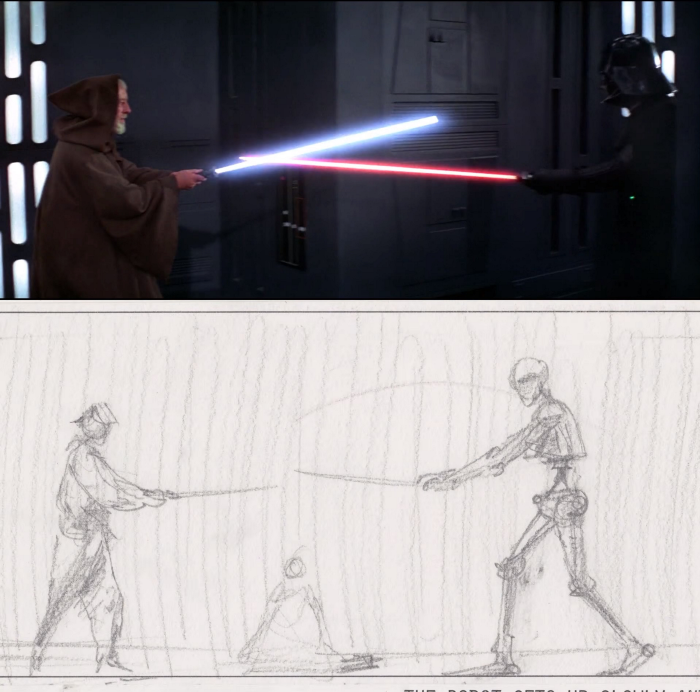
Aside from the novels, something else that paved the way for Star Wars on a more visual level is related to an unmade film adaptation of Dune from the 1970s. Chilean-French director Alejandro Jodorowsky’s proposed take on the story – which would’ve taken significant liberties with the source material while using it as a template, since he didn’t actually read the book first – is quite possibly one of the most bonkers unmade productions in Hollywood history. Jodorowsky’s vision would have featured a soundtrack composed by progressive rock bands Pink Floyd and Magma, featured designs by Mœbius and H. R. Giger, starred an all-star cast including Orson Welles, Salvador Dalí, and Mick Jagger, and run for a staggering 10 to 20 hours, with the director putting his estimate around 14 hours. Alas, such a vision would’ve been way too expensive to pull off back then, with only $10 million of a necessary $15 million needed for the insane take on the concept (which may have needed additional funding after that), but though it was never realized, the unmade production is also one of the most influential in history: it would end up paving the way for a number of science fiction productions over several decades, including Alien, Flash Gordon, TRON, The Terminator, Contact, The Fifth Element, The Matrix, Prometheus, and, of course, Star Wars, thanks to the creators it united.
Interesting shot by shot storyboard comparison of Jodorowsky's Dune & Star Wars Episode 4: A New Hope. pic.twitter.com/8TXcLw4WPs
— Stephen Scarlata (@StephenScarlata) July 14, 2014
Going through the many pieces of the storyboards, it’s clear that George Lucas – among several other sci-fi creators – saw these concepts and used them as a frame of reference for their own work. After all, Jodorowsky had sent copies of his work to all the major studios in an attempt to get his movie funded, which meant that they would have been available for him to use as a resource. As far as Star Wars goes, the storyboards, and details thereof, demonstrate further similarities. Several dueling sequences intended for the film (with standard blades rather than laser swords) would provide the template for what lightsaber combat in the original trilogy would look like. A sequence where Paul trains against a robot seems to have provided the basic template of Luke’s training scene in A New Hope. Some of Mœbius’s character designs seem to have provided a template for how certain characters would end up looking like. Though this film was never made, its influence lives on in franchises like Star Wars.
The Big Difference
It’s worth noting, however, for the various similarities that these two works have, they offer diametrically opposed concepts narratively: Dune is a fundamental deconstruction of the entire “Chosen One” concept, and emphasizes how badly things would go if a number of people started blindly following a messiah-like figure and waging wars in his name. Star Wars, in the meantime, uses that as a key concept of its narrative, but less as a political or military leader and more as someone who will restore balance to the Force itself – and though that also causes tragedy, it’s due to the actions of the protagonist and a villain manipulating him, and everyone else, rather than a hero who leads people into zealotry, and the focus becomes less focused on a prophecy and more on a family dynasty spanning over sixty years of stories. Unsurprisingly, the grand conflict of the first book itself uses a structure that Star Wars would follow: a group of ragtag rebels (the Fremen and the Alliance to Restore the Republic) from an occupied planet (Arrakis and Tatooine) rise up against a group of dangerous invaders (the Imperium’s Sardaukar and the Imperial Stormtroopers) who recently betrayed a heroic group of characters (the Jedi Order and House Atreides) and left their forces in shambles, with the heroes allying themselves with the rebels.
But the focus of Dune goes well beyond the conflict of the first book, as the series looks into themes like the nature of power, betrayal, religion, the environment, and greed in its many stories and providing no easy answers for its protagonists. Star Wars, in the meantime, aims for more accessible and straightforward themes that keep away from grey areas – love, redemption, friendship, bravery, and the willingness to commit to a cause that can make a difference – in a package that’s been able to resonate with a larger audience. There are clear heroes and villains in Star Wars, whereas good and evil are concepts that blur together in Dune. The target audiences for these two works are also quite different, which explains why these sets of themes are so different. Star Wars is, as George Lucas has described it, “a fairy tale for twelve-year-olds” that still has appeal for older audiences, while Dune was explicitly written with older readers in mind. At their cores, both of these are great stories, but Star Wars seems to be about the power of love, whereas Dune seems to be about the love of power.
Grant has been a fan of Star Wars for as long as he can remember, having seen every movie on the big screen. When he’s not hard at work with his college studies, he keeps himself busy by reporting on all kinds of Star Wars news for SWNN and general movie news on the sister site, Movie News Net. He served as a frequent commentator on SWNN’s The Resistance Broadcast.

